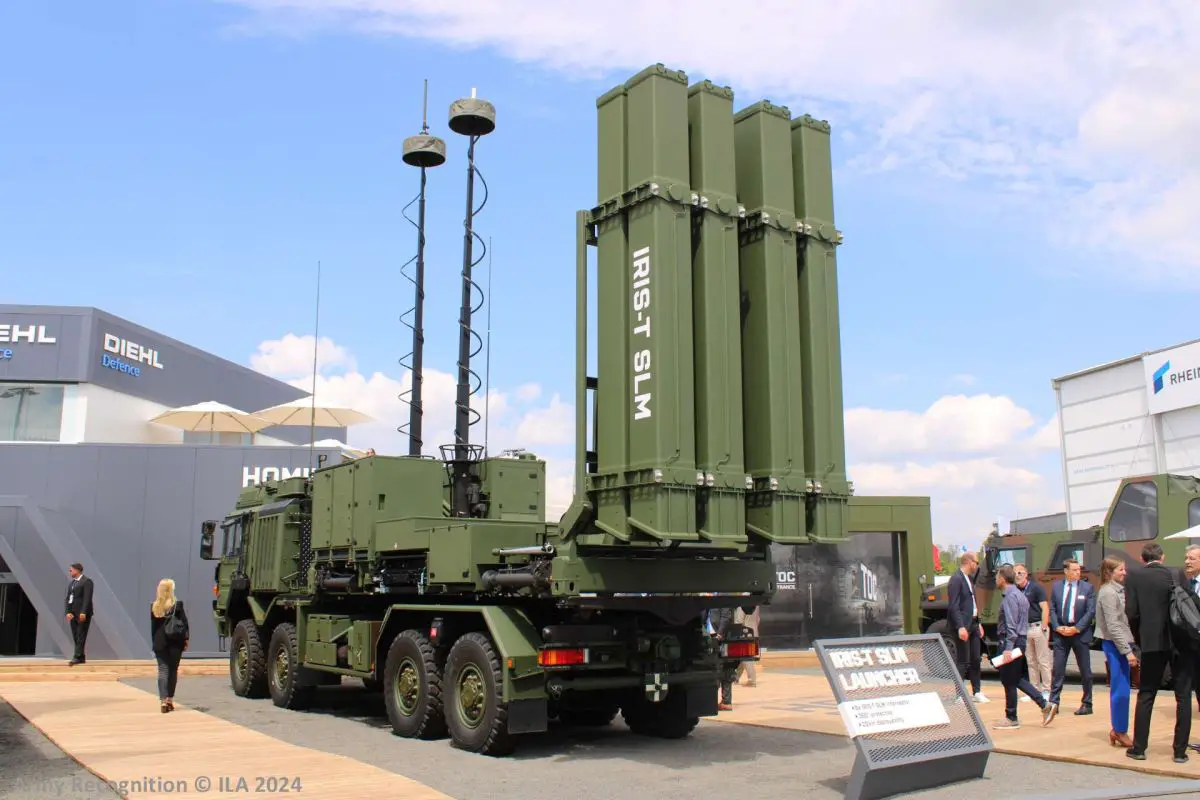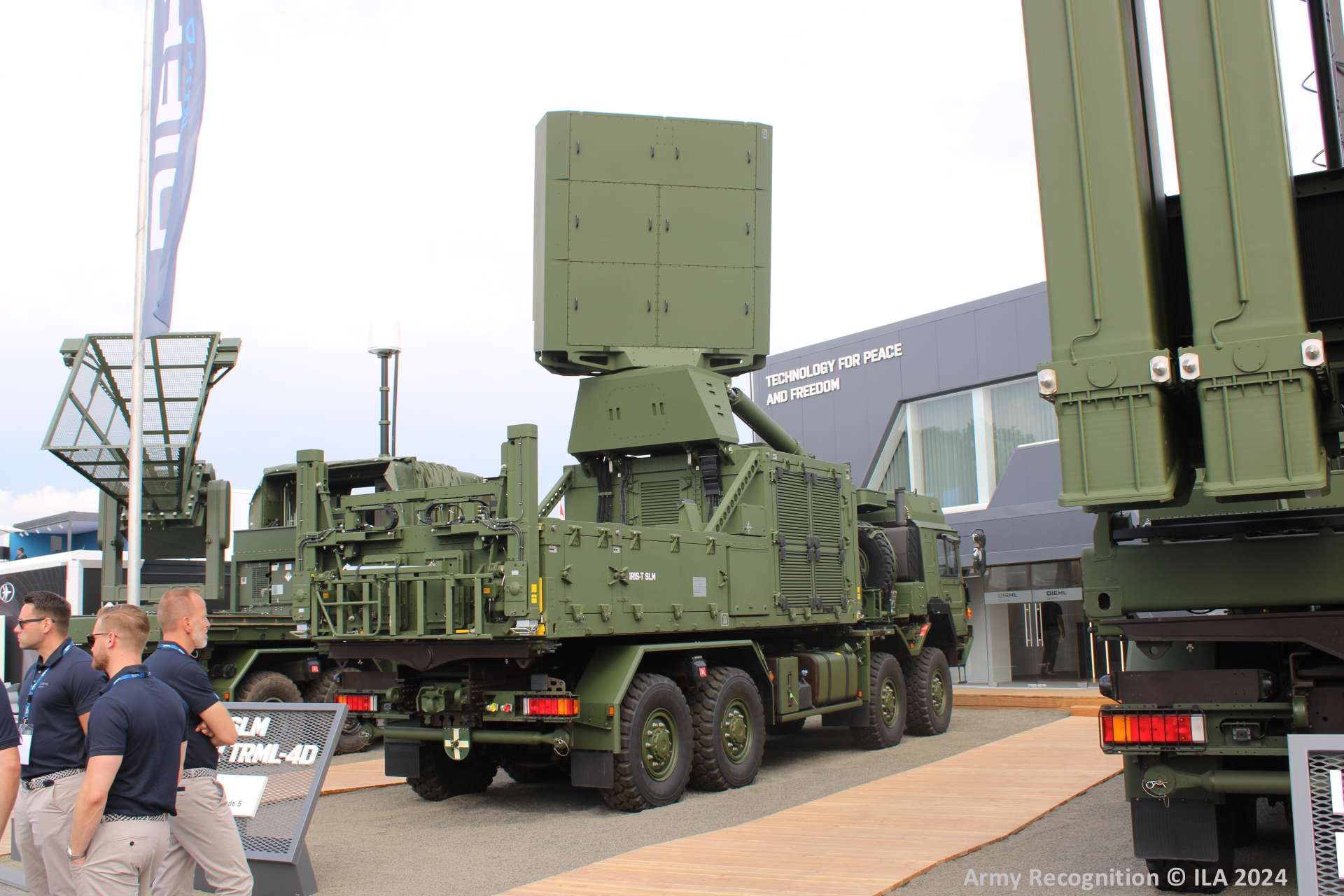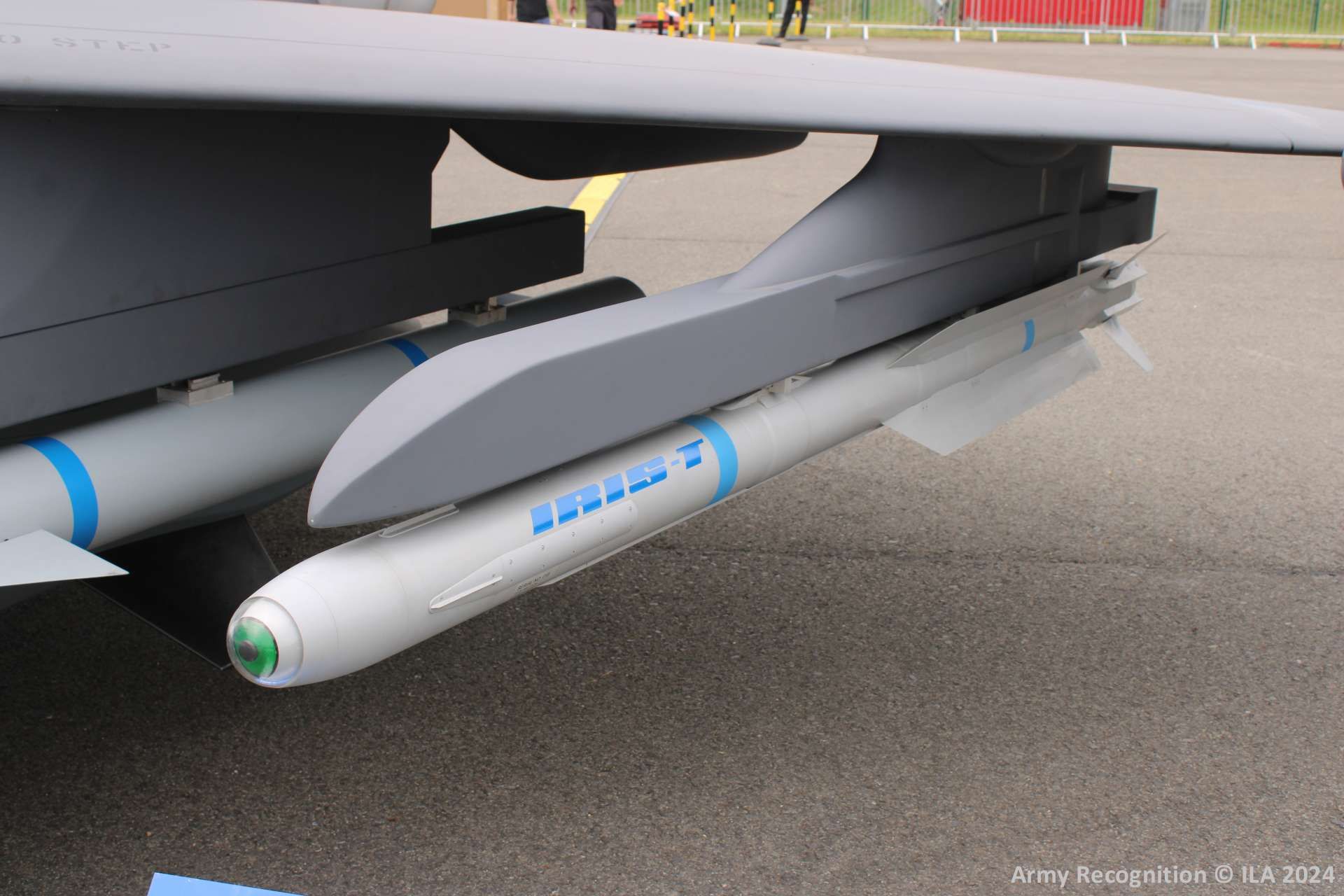Breaking News
Norway to provide Ukraine with a complete IRIS-T air defense battery.
On July 11, 2024, the Norwegian Ministry of Defense announced that Norway will donate a complete IRIS-T air defense battery to Ukraine this autumn, in cooperation with Germany. This donation is part of a broader initiative funded through the Nansen Support Programme for Ukraine, which allocates a total of one billion NOK (approximately €85,875,979.52) for air defense systems in Ukraine.
Follow Army Recognition on Google News at this link

The IRIS-T SLM (Surface Launched Medium range), a surface-to-air missile system developed by the German company Diehl Defence for medium-range air defense, proved its effectiveness in Ukraine. (Picture source: Army Recognition)
The funding from the Nansen Support Programme also supports international efforts to repair and maintain air defense equipment in Ukraine, channeled through third countries. Prime Minister Jonas Gahr Støre stated that the need for more air defense systems is critical for protecting the Ukrainian population from Russian bombs and missiles. Støre highlighted that recent bombings of various Ukrainian cities by Russia, which struck hospitals and resulted in civilian deaths, demonstrate the necessity for increased air defense protection.
Foreign Minister Espen Barth Eide emphasized that air defense support is a high priority for Ukraine. He mentioned that Norway is in close contact with Ukraine to determine the best ways to target their support, relying on Ukraine's insights into their specific needs. Norway's cooperation with Germany will see the provision of a complete IRIS-T air defense battery to Ukraine this autumn.
In addition to the IRIS-T battery, Norway's funding includes increased support for Germany’s Immediate Action for Air Defence (IAAD) initiative and international efforts to maintain and repair air defense equipment in Ukraine. This initiative is part of a revised national budget, designating up to NOK 4 billion (€343,329,960) from the Nansen Support Programme for Ukraine for air defense measures through 2024. A significant portion of this funding will go towards Germany’s IAAD initiative.

The IRIS-T SLX, the latest variant within the IRIS-T family, is a long-range surface-to-air missile system featuring an operational range of up to 80 km and a ceiling of 30 km. (Picture source: Army Recognition)
The German Immediate Action on Air Defence (IAAD) initiative was started in April 2024 by Foreign Minister Annalena Baerbock and Defense Minister Boris Pistorius. It aims to enhance Ukraine's air defense capabilities in response to ongoing Russian attacks and calls for international partners to contribute financial support and air defense systems such as Patriot missiles, SAMP/T, NASAMS, HAWK, IRIS-T, and S-300 systems. This initiative addresses significant gaps in Ukraine's defenses, especially in protecting critical infrastructure in cities like Odesa and Kharkiv.
Several countries have pledged support for the IAAD initiative. Canada announced a $76 million contribution, underscoring the role of NATO allies in supporting Ukraine. Lithuania has committed to providing six AMBER-1800 air surveillance radars, essential for detecting and tracking aerial threats. Additionally, Denmark and the Netherlands are discussing further financial and material aid contributions. Germany has also ordered additional Patriot systems to maintain consistent support. This collaborative effort aims to improve Ukraine's air defense capabilities in response to the ongoing conflict.

The radar unit, compatible with various electro-optical/infrared guidance systems and AESA radars like the Hensoldt TRML-4D, provides a detection range of up to 120 km and typically requires 3-4 personnel. (Picture source: Army Recognition)
The IRIS-T SLM (Surface Launched Medium range) is a surface-to-air missile system developed by the German company Diehl Defence for medium-range air defense. The system integrates a missile derived from the IRIS-T air-to-air missile with radar and command systems to ensure accurate targeting and engagement. It can engage a variety of airborne threats, including aircraft, drones, and missiles, with 360-degree coverage and the capability to track and destroy targets at both low and high altitudes. The IRIS-T SLM offers flexible deployment options and can be integrated into existing air defense networks, enhancing its role in modern integrated air defense environments.
An IRIS-T SLM battery generally operates with a crew of about 20-25 personnel and consists of a radar unit, three launcher units, and a command post. The radar unit, compatible with various electro-optical/infrared guidance systems and AESA radars like the Hensoldt TRML-4D, provides a detection range of up to 120 km and typically requires 3-4 personnel. Each launcher unit is mounted on an RMMV SX45 8x8 chassis and can carry eight missiles, with a crew of 2-3 operators per launcher. The Tactical Operations Center, staffed by around 5-6 personnel, coordinates the battery's operations. Support vehicles, including workshop, spare parts, and reloading vehicles, ensure maintenance and logistics support, requiring additional personnel.

The system integrates a missile derived from the IRIS-T air-to-air missile with radar and command systems to ensure accurate targeting and engagement against a variety of airborne threats, including aircraft, drones, and missiles. (Picture source: Army Recognition)
The IRIS-T SLM missile features high agility with the ability to turn at 60 g and a rate of 60° per second. It has a diameter of 127 mm, a length of 3 meters, and weighs 87 kg. The missile can reach speeds over Mach 3 (approximately 3,672 km/h) with a maximum range of up to 40 km and a maximum altitude of up to 20 km. Its high-explosive fragmentation warhead weighs 11.4 kg and uses an infrared homing guidance system with thrust vector control and advanced target discrimination. The missile is equipped with radar proximity and impact fuzes and is propelled by a solid rocket motor with thrust vector control.
The RMMV SX45 8x8 chassis, used for both the launcher and command post vehicles, is designed for rugged performance with a fording depth of 1.5 meters, a maximum road speed of 88 km/h, and a range of 483 km. It features an armored cabin capable of withstanding 7.62x51 mm armor-piercing rounds, artillery shell splinters, and an 8 kg anti-tank mine blast, ensuring protection for the crew in hostile environments.


























